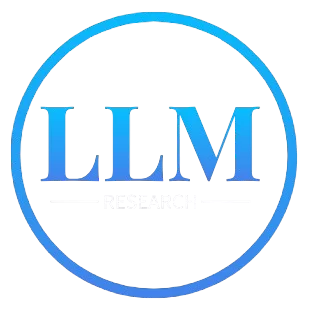1. Advanced Cross-Referencing for Research
LLMs can be used to create a meta-layer of insight by cross-referencing obscure research papers or datasets.
- Example: Feed it niche datasets (e.g., indigenous farming practices) alongside modern agricultural papers to find connections nobody else sees.
- Use Case: Interdisciplinary breakthroughs in environmental science or medicine.
- Related Tool: See LLM Research for localized LLM research integration.
2. Personalized Negotiation Scripts
Generate tailored negotiation strategies based on specific interpersonal dynamics.
- Example: You input personality traits of the other party (analytical, emotional, etc.), and the LLM builds a conversation roadmap.
- Use Case: Deal-making in business, diplomatic discussions, or even resolving family disputes.
3. Niche Content Debugging
Write unusual or highly specialized scripts and let the LLM spot errors or logical inconsistencies that might take hours for a human to find.
- Example: Complex logic-based board game rules, custom software algorithms, or generative poetry with strict syllabic patterns.
- Use Case: Perfect for creators who deal with one-of-a-kind content.
4. Forgotten Language or Dialect Reconstruction
Revitalize or recreate languages that are extinct or near-extinct using historical documents and linguistic patterns.
- Example: Feed in ancient texts and fragments from endangered dialects to generate reconstructed syntax and grammar.
- Use Case: Linguistic preservation, cultural heritage projects.
5. Hyper-Specific Local Business Analysis
Tailor LLMs to evaluate granular, hyperlocal trends in small businesses.
- Example: Provide sales data and social media patterns for a coffee shop in one neighborhood to identify untapped micro-demographics.
- Use Case: Localized growth strategies.
6. Bespoke Curriculum Design
Create personalized learning tracks for individuals based on granular input about learning styles, existing skills, and goals.
- Example: A math curriculum for visual learners who are also dyslexic, incorporating gamification principles.
- Use Case: Revolutionary in education for people with unique needs.
7. Reverse Engineering Cultural Narratives
Dissect the structure of popular myths, ideologies, or propaganda using LLMs trained in semiotics and sociology.
- Example: Analyze political speeches across decades to detect how narratives are constructed and manipulated.
- Use Case: Journalism, activism, academic research.
8. Smart Archeology Hypotheses
Feed archeological data and related mythology to an LLM for hypothesis generation.
- Example: Use pottery shard data and ancient trade records to theorize about migratory patterns in the Bronze Age.
- Use Case: Archeological and historical breakthroughs.
9. Ethics Sandbox for Controversial Issues
Simulate ethical dilemmas by presenting diverse perspectives on a topic (from religious to secular, cultural, and philosophical).
- Example: Explore moral implications of futuristic technologies, with LLM-guided thought experiments.
- Use Case: Policy-making, academic philosophy, or speculative fiction writing.
10. Unusual Hobbies Assistant
Generate strategies, ideas, and insights for hobbies or niches with little to no existing guides.
- Example: Creating custom insect habitats for local pollinators, or designing scavenger hunts in dense urban areas.
- Use Case: A personal assistant for those pushing the boundaries of traditional leisure activities.
11. Counter-Pattern Problem Solving
Feed the LLM "common wisdom" on an issue to see if it can propose counterintuitive solutions.
- Example: “No-code” app design ideas that challenge traditional UX/UI principles.
- Use Case: Innovation-driven projects.
12. Personalized Story Engine
Use the LLM to co-create deeply personal narratives or explore “what if” scenarios in your own life story.
- Example: Input major life decisions (e.g., studying abroad, changing careers) and let it generate fictionalized versions of those choices.
- Use Case: Self-reflection, therapeutic journaling.
13. Applied Dream Analysis
Input dream descriptions and have the LLM create speculative interpretations grounded in cultural symbolism.
- Example: A recurring dream about rivers might pull interpretations from psychoanalysis, folklore, and hydrology.
- Use Case: Creative inspiration or personal insight.
14. Independent Policy Testing Simulator
Develop speculative government or corporate policies and simulate outcomes based on historical precedents and logical projections.
- Example: Simulate a basic income policy in a specific region with variables like inflation, employment rates, and public sentiment.
- Use Case: Non-linear policy planning for think tanks or activism.
15. Creative Metaphor Generator for Abstract Concepts
Generate complex, layered metaphors to explain abstract ideas.
- Example: “Explain quantum entanglement as a type of collaborative art performed by light.”
- Use Case: Educators, poets, and anyone trying to simplify complexity.
16. Custom Legal Argument Drafting
Draft unique legal arguments based on obscure precedents or hypothetical scenarios.
- Example: “What are the legal implications of AI-generated artwork being used in advertising?”
- Use Case: Niche legal innovation or theoretical law discussions.
17. Multi-Cultural Ritual Design
Create new rituals or ceremonies that integrate diverse cultural practices.
- Example: A hybrid celebration of Lunar New Year and Thanksgiving that bridges traditions across continents.
- Use Case: Community-building, wedding planning, or cultural diplomacy.
18. Predictive Obsolescence Analysis
Identify what technologies, industries, or skills will become obsolete based on current trends.
- Example: Predict the lifespan of physical retail in specific sectors or regions.
- Use Case: Strategic planning, career advice, or speculative writing.
19. Ideation for Micro-Communities
Brainstorm micro-initiatives for highly specific communities.
- Example: “Design community-building activities for competitive marble racing enthusiasts.”
- Use Case: Online forums, hyper-niche meetups.
20. Non-Human Character Design
Generate unique, non-human perspectives for stories or games.
- Example: A sentient mountain describing its experience over millennia.
- Use Case: Fiction writing, game development, or philosophical exploration.

